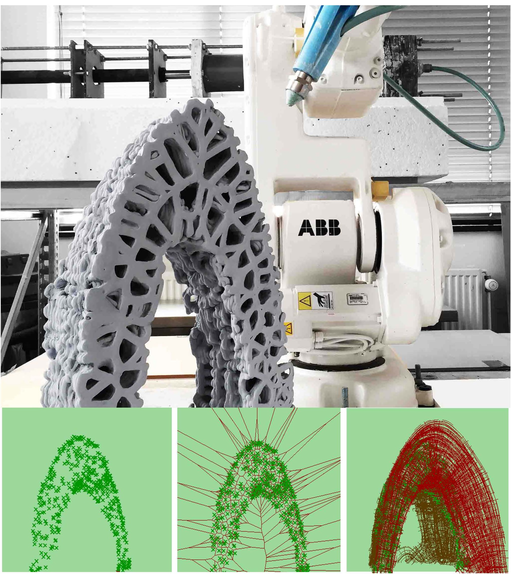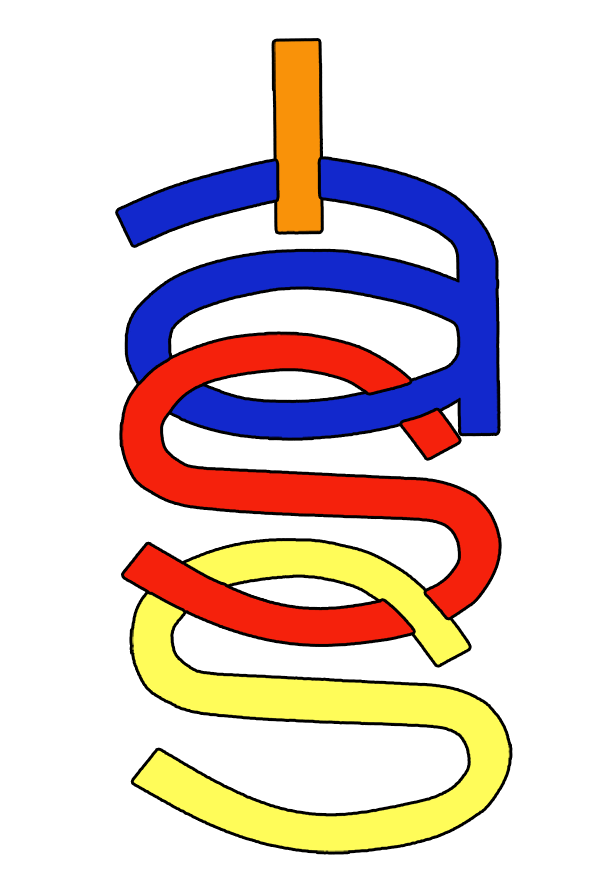Digital Technology and BIM
The IASS Symposium will host special workshops and sessions presenting the latest visions and technology in the field of Digital Technology and BIM.
It is undeniable that digital technology has a large impact on our society and built environment. Who could have guessed the rise of the internet, the cloud and a mobile in every pocket? But where do we go from here? What will the future look like now we have all this technology? How can we apply the technology in a meaningful way to enhance our lives, the way we live, our built environment and our society? Do we need more technology? And if so, what do we need?
The IASS2015 on Future Visions will explore the latest thinking and developments on these questions and you can join us!
BIM track - scheduled workshops
We are hosting a number of workshops in the weekend before the IASS Symposium on the 15th and 16th of August.
More information about specific individual workshops can be found on the workshops page
Date and Time:
Sunday afternoon, 16 August 2015, 13h00-17h00
Tutors:
Pierluigi D’Acunto, Shibo Ren and Alessandro Tellini
Location:
Conference location, Muziekgebouw aan ‘t IJ
Introduction
Thanks to the application of structural folding to design, it is possible to produce efficient structures that are able to resist the external applied loads through their form. Moreover, the use of folding makes it possible to generate complex geometries that can address diverse spatial requirements. As a collaboration between the Chair of Structural Design at ETH Zürich and Arup Amsterdam, the proposed workshop will introduce a design method for folding that integrate structural and spatial parameters. The objective is to provide the participants with an understanding of design experimentation with folding and the ability to build up simple digital and physical models.
Date and Time:
Saturday 15 August 2015, 8h30-17h00 and Sunday 16 August 2015, 8h30-17h00
Tutors:
White Lioness technologies, Anke Rolvink, Dion Jansen, Jeroen Coenders
Location:
Conference location, Muziekgebouw aan ‘t IJ
Introduction
Applying multidisciplinary design optimisation is difficult and time consuming. Innovative and experimental tools in computation can make multidisciplinary design optimisation better accessible for architects, engineers and designers.
During the workshop, participants have the opportunity to extend their existing design models with a multidisciplinary design optimisation engine.
In this workshop you will learn about the application of an experimental large scale multidisciplinary design optimisation framework called Stampede. You will be able to apply your own design challenges to this multidisciplinary design tool and experiment with more complicated analysis procedures. Participants can use their existing design models or use one of the workshop models and use familiar parametric modelling tools.

For more information go to: http://www.stampede-computing.com.
Date and Time:
Sunday afternoon, 16 August 2015, 13h00-17h00
Tutors:
Ioanna Symeonidou
Location:
Conference location, Muziekgebouw aan ‘t IJ
Introduction
The design of tensile structures for architectural or artistic purposes, the analogue and digital form-finding methods and the feedback loop established between them.
Date and Time:
Saturday 15 August 2015, 8h30-17h00 and Sunday 16 August 2015, 8h30-17h00
Tutors:
Henriette Bier, Sina Mostafavi, Ana Maria Anton, Serban Bodea
Location:
Conference location, Muziekgebouw aan ‘t IJ
Introduction
Introduction of robots in architecture has an impact on process and result as it leads to novel design conceptualisation inspired by these new methods of making. In this context, it is crucial to establish links between computational design, virtual interfaces, and customized robotically supported physical modes of production, which is addressed in the workshop Seamless Variation. The workshop focuses on two types of change and differentiation: On the one hand it introduces seamless change from one robotic mode of production to another and proposes efficient ways of fusing different production methods, and on the other hand it addresses seamless, informed, and differentiated material distribution at different scales implying addition, removal and change of material where needed and as needed.

BIM track - scheduled sessions
During the IASS Symposium, we are hosting a continuous track as part of the Digital technology and BIM track organised by the scientific organising committee. All sessions related to the BIM track will be hosted in the BIM Huis. More information about the specific sessions you can find below.

Computational Design Of Large Sports Buildings [Spr1]
Monday 17 August 2015 13:30 - 15:30, Room 2 BIM huis
Organiser:
Dr. Michela Turrin - Design Informatics, Technical University Delft
Sport buildings are an exciting design opportunity, but imply also challenging tasks in meeting their special performance requirements. This session aims at presenting and debating design approaches that contrast with post-engineering processes. In post-engineering, technical performances are considered in late stages of design and tailored upon preconceived and constraining architectural solutions. Contrarily, this session will debate the use of engineering (including structural) performances to drive creative innovation in conceptual design. The support given by current digital technologies will be debated from various perspectives: What are the digital processes to support computational design approaches for performance driven explorations? How do they facilitate the multidisciplinary integration during the design process; and how do they favour loops of interdisciplinary design feedback? How can digital processes support not only each specific design, but better support the design discovery process and the extraction of reusable knowledge? How are all these digital tools and methods used during the design of large sport buildings?
Digital Architecture [Arc1]
Monday 17 August 2015 16:00 - 18:30, Room 2 BIM Huis
Organiser:
Sandra Manninger - University of Michigan
All the opportunities inherent in computer controlled fabrication serve as an indicator for an era of individualized production which has been described by commentators as the Third Industrial Revolution1. Aspects such as machine learning, robot-human cooperation2 and cognitive machines are expanding and transforming the entire ecology of production, morphing from economies of scale to economies of agglomeration. For the discipline of architecture to be part of this massive shift, it is of paramount importance to understand how the Postdigital Age will change the game in terms of architectural production and design, as well as how it produces a novel material culture at large. A culture which brokers the realities (and uncertainties) of programming, coding and Matter in Formation.
WG15 Structural Morphology: Computation & Geometry 1 [C&G1]
Monday 17 August 2015 16:00 - 18:30, Room 3 BIM Huis Annex
Organiser:
Masoud Akbarzadeh - ETH Zurich, Switserland
Maasaki Miki - University of Tokyo
This session deals with the relationship between computation and geometry and processing data for geometrical uses.
Performance Aided Design [PAD1]
Tuesday 18 August 2015 10:00 - 12:00, Room 2 BIM Huis
Organiser:
Dario Parigi - Aalborg University
Creativity plays a fundamental role in architectural design. This session investigate the role of computational tools in expanding the possibilities for creative work, and focuses on the constantly increasing range of available performance analysis, optimization, tools and methodologies, and their role in leveraging new forms of integration between engineering and architectural issues. Performance Aided/Assisted Design (PAD) indicates an evolving paradigm in architectural design towards a “poetic of performance”, a design approach that aims at including rather than excluding the complexity implicit in the design process, and that uses the complexity as source of inspiration for developing unique and innovative solutions.
WG 13 Computational Morphogenesis [Mor1]
Tuesday 18 August 2015 10:00 - 12:00, Room 3 BIM Huis Annex
Organiser:
Makoto Ohsaki - Hiroshima University
This session deals with application of computational methods and optimization approaches to design and form-finding of shell and spatial structures.
WG15 Structural Morphology: Computation & Geometry 1 [C&G2]
Tuesday 18 August 2015 13:00 - 15:00, Room 2 BIM Huis
Organiser:
Masoud Akbarzadeh - ETH Zurich, Switserland
Maasaki Miki - University of Tokyo
This session deals with the relationship between computation and geometry and processing data for geometrical uses.
3D printing [3DP1]
Tuesday 18 August 2015 13:00 - 15:00, Room 3 BIM Huis Annex
This session deals with novel digital fabrication, additive manufacturing and robotic printing.
The Future of BIM [BIM1]
Tuesday 18 August 2015 15:30 - 17:30, Room 2 BIM Huis
This session deals with the future of Building Information modelling. What will be the next step of BIM?
WG15 Structural Morphology: Computational Design [CDe1]
Tuesday 18 August 2015 15:30 - 17:30, Room 3 BIM Huis Annex
Organiser:
Anke Rolvink - White Lioness technologies, The Netherlands
Caitlin Mueller - MIT, USA
This session deals with design computational techniques and computational methods.
Digital Design [Dig1]
Wednesday 19 August 2015 10:30 - 13:30, Room 2 BIM Huis
This is a general session on digital design methodology and technology.
The Future of Dutch BIM [BIR1]
Wednesday 19 August 2015 13:30 - 16:00, Room 2 BIM Huis
Organiser:
Dik Spekkink - special session organised by the Dutch Building Information Council (BIR)
The Dutch Building Information Council (BIR) aims to accelerate the implementation of Building Information Modelling (BIM) in the national building industry. BIR does that e.g by making BIM knowledge and experience available and accessible, especially also for SME’s, and by developing and/or promoting open BIM standards. BIM requires close cooperation between project partners. Therefore, the BIR mirrors the composition of an average project team: clients, architects, consulting engineers, contractors, installation companies and suppliers/manufacturers are represented. As BIM is not only a technical issue, the BIR activities are organized into four “clusters”: Management & Organization, Human & Cultural Factors, Processes and Information Technology. The most important BIR activities, products and standards will be highlighted.

Robotics [Rob1]
Wednesday 19 August 2015 13:30 - 16:00, Room 3 BIM Huis Annex
This session deals with robots related to the building industry.
WG 15 Structural Morphology: Graphical Computation [GrC1 & GrC2]
Thursday 20 August 2015 10:30 - 15:30, lunch 12:30 - 13:30, Room 2 BIM Huis
Organiser:
Philippe Block - ETH Zurich, Switzerland
Corentin Fivet - MIT, USA
The Graphical Computation study group is part of the Structural Morphology working group of the International Association of Shell and Spatial Structures (IASS). Its principal aim is to further computational methods that build on the geometric relationships between a structural configuration and its internal force distribution, opening up unique opportunities for flexible force-driven design and for robust structural optimisation.
The underlying theory goes back to the second half of the 19th century with J.C. Maxwell’s reciprocal diagrams and the development of graphic statics. However, a lot of exciting new results have recently happened with increasing relevance and direct applications to modern design and engineering practice. The subject brings together prominent academics and professionals from North America, Europe and Asia.
The Graphical Computation study group’s objectives are to discover lost knowledge and techniques, develop novel methods and tools, share practical case studies, and, in general, educate architects and structural engineers on the power of graphical approaches in structural design, as well as to promote their use.
The IASS 2015 special session on graphical computation will be the opportunity to prepare an exciting and high-quality special issue on the subject for the International Journal of Space Structures, with as guest editors Philippe Block, Tom Van Mele and Corentin Fivet.

Digital Form Finding and Optimisation [DFF1 & DFF2]
Thursday 20 August 2015 10:30 - 15:30, lunch 12:30 - 13:30, Room 3 BIM Huis Annex
This session deals with digital form finding and optimisation techniques.
